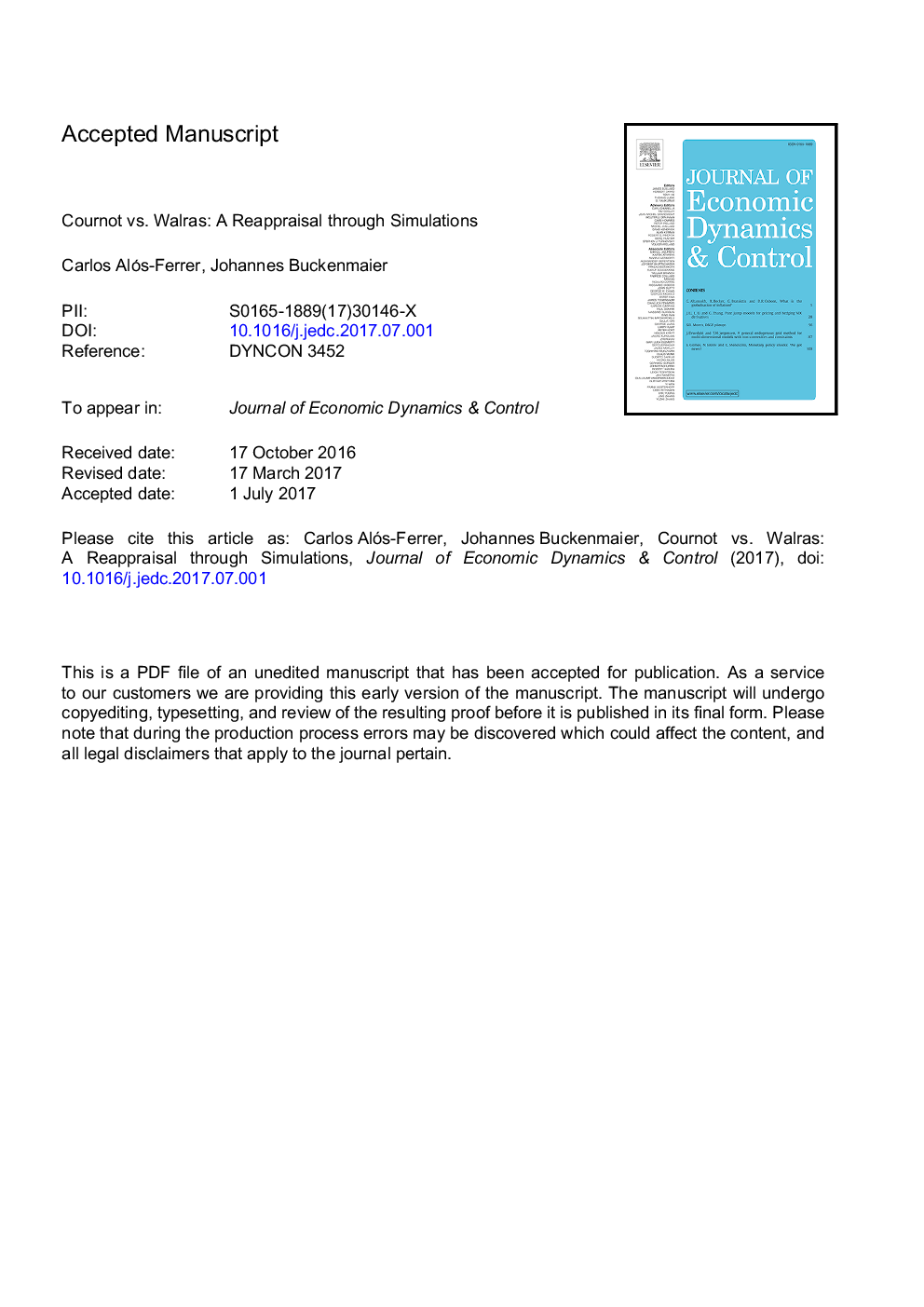| Article ID | Journal | Published Year | Pages | File Type |
|---|---|---|---|---|
| 5097985 | Journal of Economic Dynamics and Control | 2017 | 41 Pages |
Abstract
Best-reply behavior in Cournot oligopolies generally leads to Cournot-Nash equilibrium, but imitative behavior selects the Walrasian equilibrium as the unique stochastically stable state. Previous work (Alós-Ferrer, 2004) showed that in the presence of memory, imitative behavior leads to a non-trivial dynamics selecting all quantities between the Cournot and Walrasian outcomes. However, the scope of previous results was limited to specific assumptions on demand and cost functions, and did not provide information on the shape of the distribution of outcomes. We use computational simulations to address these limitations. We show that the selection result for non-trivial memory holds beyond the set of well-behaved Cournot games previously analyzed. Further, we find that, in Cournot games, the limit distribution of long-run outcomes is highly skewed towards the Walrasian quantity. Although longer memory increases the importance of the Cournot equilibrium, the competitive outcome remains the dominant prediction.
Related Topics
Physical Sciences and Engineering
Mathematics
Control and Optimization
Authors
Carlos Alós-Ferrer, Johannes Buckenmaier,
